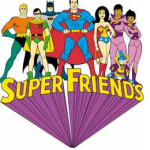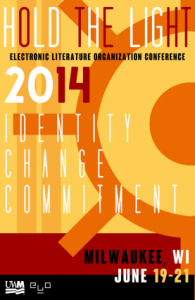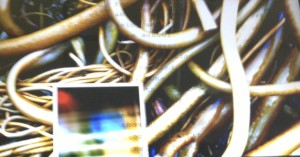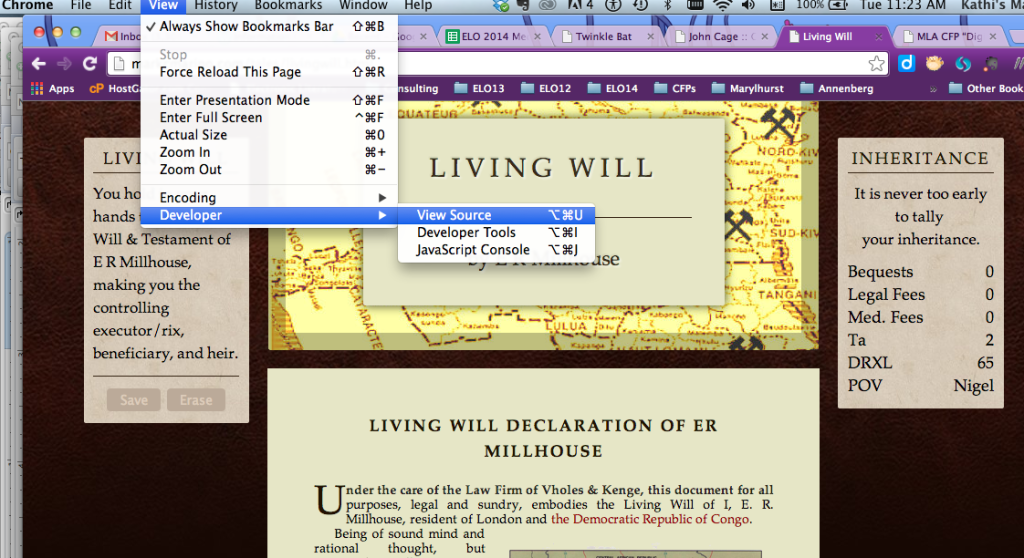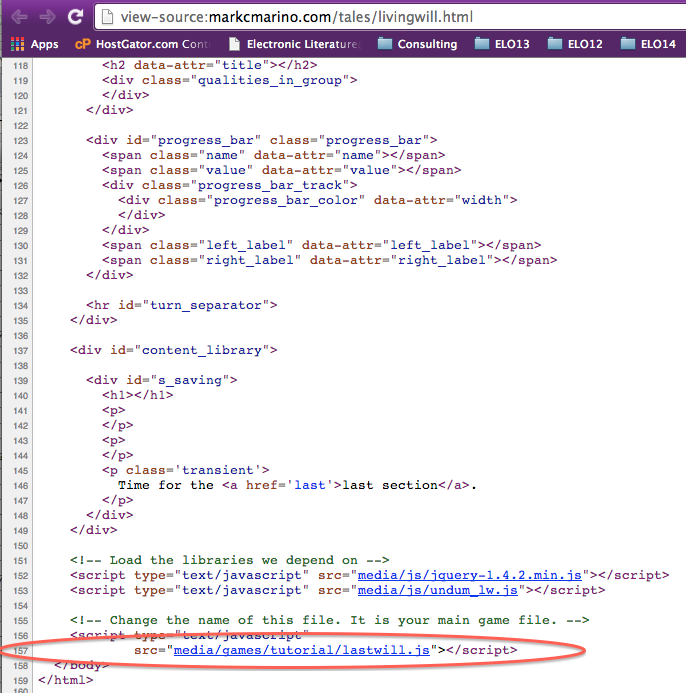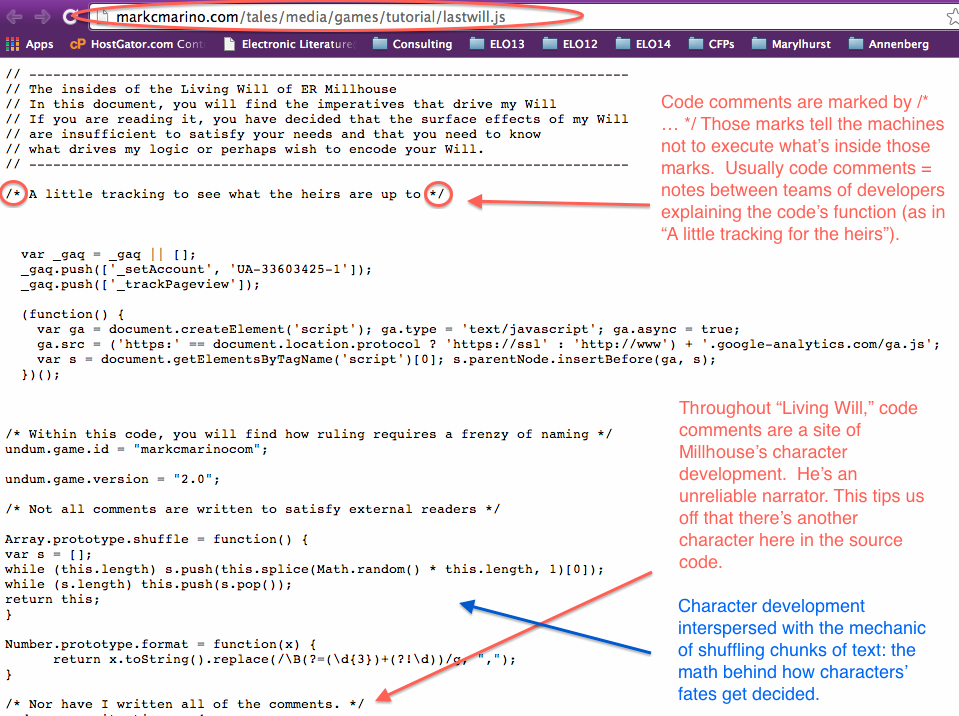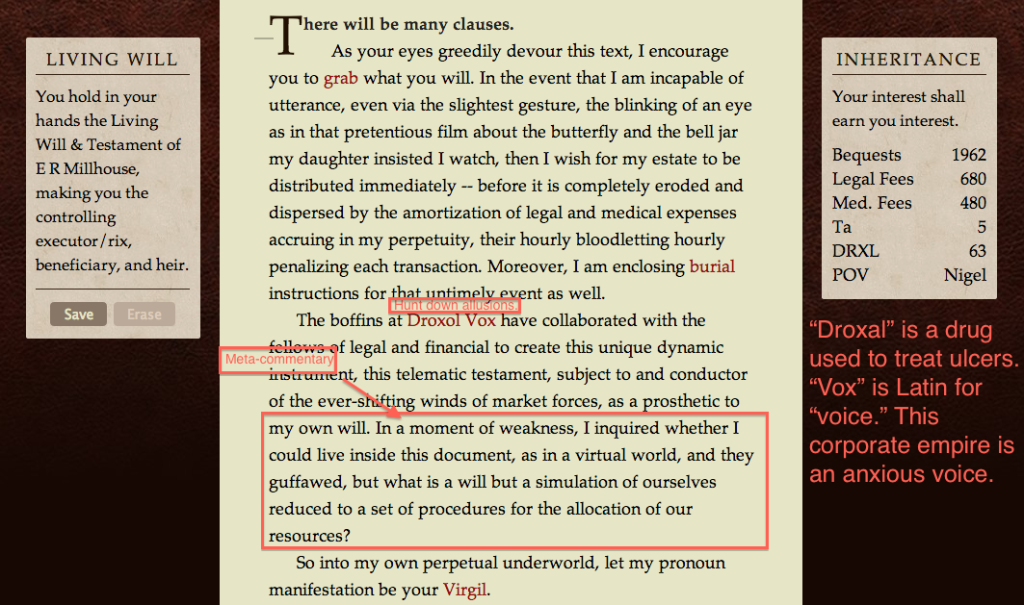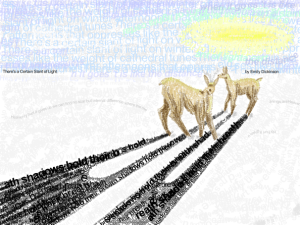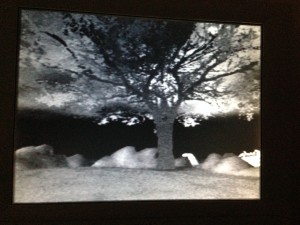In 2011, I rejoined the MLA after a twelve-year hiatus.
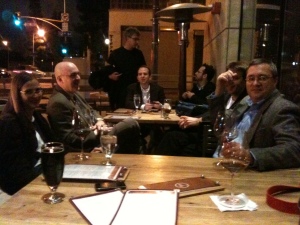
Erin Templeton, Jason Jones, Brian Croxall, Matt Gold, George Williams and Stephen Ramsay at Cork, a bar in downtown L.A. at MLA11.
I was working full time as an Associate Professor (Teaching) of Writing at the University of Southern California (which means: NTT, 3/3, 3-yr renewable contract, stable employment, no sabbatical or paid support for research), but I let my MLA membership lapse because I didn’t feel that it was relevant to my daily professional life.
To be honest, I was also still bruised by what MLA had meant to my generation of Ph.Ds seeking work in the late 90s when the employment crisis that’s acute now was just being felt by grad students. Senior faculty didn’t regard the multi-year searches and backlog of talent as a structural problem. About half of my friends from Berkeley left the profession, some with the degree, some not.
In 2011 I rediscovered MLA through Mark Sample’s annual list of digital humanities panels. Via Facebook I asked my friends if anybody was going. “You’re going to MLA for fun?” one asked incredulously. “Too much stress,” another posted.
It was better than fun. It was exhilarating. Part of me that had been somnolent for years woke up. And she wanted to research, and write, and dive back in. This MLA was transformed: it was friendly. Instead of hauteur, I heard genuine sympathy and activism from senior faculty and MLA leadership, such as Marilee Lindemann’s expert stewardship of the “New Tools” panel, which featured Marc Bousquet, Chris Newfield and Rosemary Feal (see my assessment of it here “3. New Tools Panel”). There was a lot of excitement around digital humanities, and yet DH was still intimate enough that a #dhmeetup hashtag pulled about twenty people (some of whom pictured above) to the Cork wine bar. I met face-to-face people I read daily in my Twitter feed, and whose scholarship I’d sought out. Tom Scheinfeldt speculates that the digital humanities stay “nice” because debates focus on method: “If anyone takes an argument too far afield, the community of practitioners can always put the argument to rest by asking to see some working code, a useable standard, or some other tangible result.” One can imagine that #transformdh and #dhpoco [post-colonial] scholars might suggest this view is too instrumentalist, that it skirts the hard layers of power and ideology that humanistic inquiry is uniquely good at peeling back. But still, “nice” does suggest that mutual interdependence in collaborative projects gives people a stake in collegiality.
DH “niceness” impacted me in some very personal ways. Previously I’d been a full time NTT; but now, at MLA 2011, I was part-time, an adjunct. Shockingly, it didn’t matter. The question wasn’t “what is your status?” — eyes flicking down to the badge. The question was, “what can you do?” Turns out I can do a lot, as can other adjuncts I know. We need an MLA that operationalizes support for adjuncts in professional development, helping adjuncts to find paying work for their skills outside of academia and paying for digital training that would increase adjuncts’ options and mobility (and by paying, I mean actually paying for their time). Labor organization is one piece of adjunct activism, but it is not the full story. MLA’s mission and the need for reform are broader than that.
Fulbright Scholar
I stand for Executive Council because I’m living what I call “the new” MLA, where successful careers can be protean and mobile. The question “what can you do?” concretizes potential in ways that rank and institutional prestige can only conjure. As a part-timer, I won a Fulbright: I’m the 2014-15 U.S. Fulbright Scholar of Digital Culture at the University in Bergen, Norway. I’m not unusual in being an adjunct quite capable of strong research; but I am very unusual in being given the opportunity.
In this “new MLA,” it’s not a stretch to imagine that MLA members could, like other professionals outside the academy, be able to relocate with our partners/families — or just because we want to — without being subject to permanent un- or under-employment.
My career isn’t unified in one institution or even one field. I’m a scholar and curator of electronic literature. I’m a teacher of rhet/comm. I’m a digital technologist coaching faculty and students in new tools and course development. I’m a researcher working in virtual classroom software. I’m a consultant exploring emergent story platforms and connecting talent to potential funders and other interested parties.
I joined my husband on a relo in 2009 and left my full-time NTT job. I am incredibly fortunate that leaders I knew at USC trusted me enough to permit an unusual arrangement: I resumed teaching at USC part time from Portland, Oregon, pioneering experimental classes in virtual classroom software and flying down to L.A. one week monthly to lead the same class face-to-face. Because I’m part-time, I’ve branched out to teach at other places: a university that grants mostly baccalaureate degrees, and a small liberal arts college. Working in those environments gave me a small taste of the diverse missions that MLA members serve at their home institutions. MLA members are united in our drive to educate students superbly, but our institutions live by different notions of what exactly that means, and how best to do it.
In the MLA of the 90s, it would have been highly unlikely for a part-timer to convene panels as I did at three consecutive MLAs: “Building Digital Humanities in the Undergraduate Classroom” with Brian Croxall in 2012, “The Classroom as Interface” in 2013, and “E-Literature Translations: Platform, Database, Language” in 2014. I co-curated the first exhibit of electronic literature at MLA, and the next year, the first e-lit showcase at the Library of Congress. Reviews of my exhibits have been published in the Huffington Post and academic journals. I am working on a book project called “Algorithmic Subjects”; Literary and Linguistic Computing published part of one chapter, a feminist reception history of early hypertext.
In terms of service to MLA, I’ve been working to get approved a new MLA Forum for creative writers and scholars of creative writing. I’m on the executive committee for RCWS: Creative Writing. I strongly believe that writing pedagogies across disciplines (CW, rhet/comm, literary studies, digital humanities) expand opportunities and the scholarly imagination of MLA members.
What I Propose To Do on the MLA Executive Council
I’m standing for MLA Executive Council because I know how to implement some of the concrete recommendations for reform specified in the Task Force on Doctoral Study. Specifically, I advocate and propose to work toward:
- Expanding professionalization opportunities
- Training all cohorts of MLA members how to engage more deeply with technology and integrate it meaningfully in curricula and in extracurricular professional activities
- Identifying non-course based activities that are essential in today’s work environment, and creating procedures by which the full range of higher education institutions might offer them
As a person who trained for scholarly research at Berkeley, then worked exclusively in teaching jobs, and now is again researching and publishing scholarship, I affirm the Task Force’s first objective to “Pursue and maintain academic excellence.” While I agree with the Task Force’s recommendation to augment doctoral preparation in pedagogy and teaching, our research differentiates us from experts in other fields (like teaching). I would like to see folded into the pursuit and maintenance of “academic excellence” a reward for young scholars who track what’s happening in literary arts right now. Transmedia, games and mobile stories developed as apps are defining the story experience today. Scholars of literature equipped to think about developments in those fields will experience increased demand for their services.
My scholarship and public presentations in electronic literature and experience teaching faculty and students in virtual environments primes me to aid in this work. One of my projects at the Annenberg Innovation Lab (where I’m on the Research Council) addresses “Liveness and Emergent Story Platforms.” I’ve written about the aesthetic of mobile and locative electronic literature. I curate exhibits that show the history of these emerging trends and present new work.
What other discipline prepares Ph.Ds only for academic jobs in higher education? Why wouldn’t we take our skills into the marketplace at a time when mobile computing has led to an explosion in demand for stories, games and transmedia experiences? Story skills I’ve honed in the academy landed me a consulting gig with the Oregon Storyboard judging a transmedia competition. I advised a Portland design firm that wanted to create a curriculum for training executives and project managers in “mobile, connected thinking.” I give talks about how storytelling affects Portland’s local startup community. (See video above.)
I’m a bridge-builder. I stand for “high intellectual standards maintained through creative flexibility” and join the authors of the Task Force Report in “validat[ing] diverse career outcomes.”
Where’s the ballot, you ask? Right here! Please vote me onto the Executive Council!





